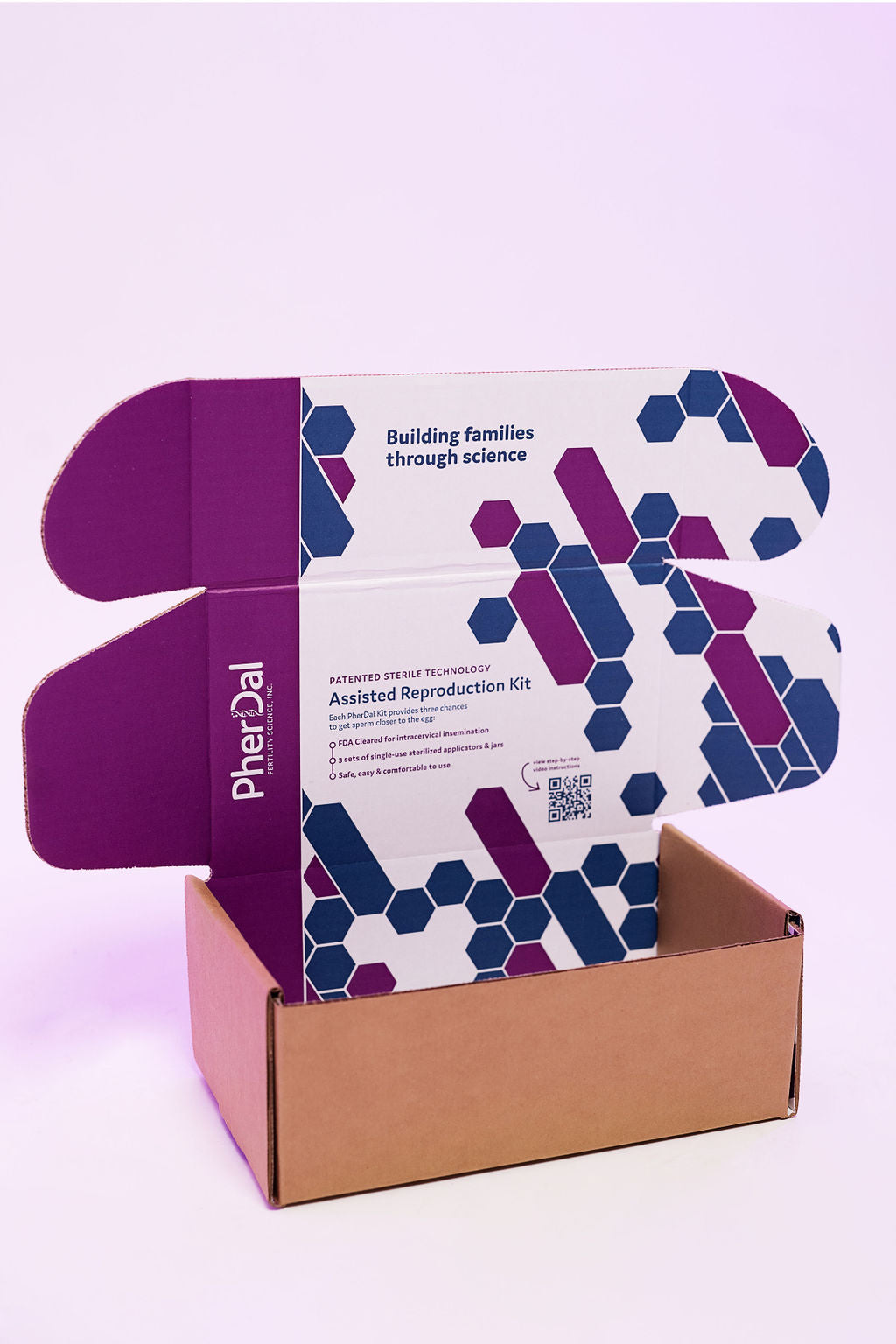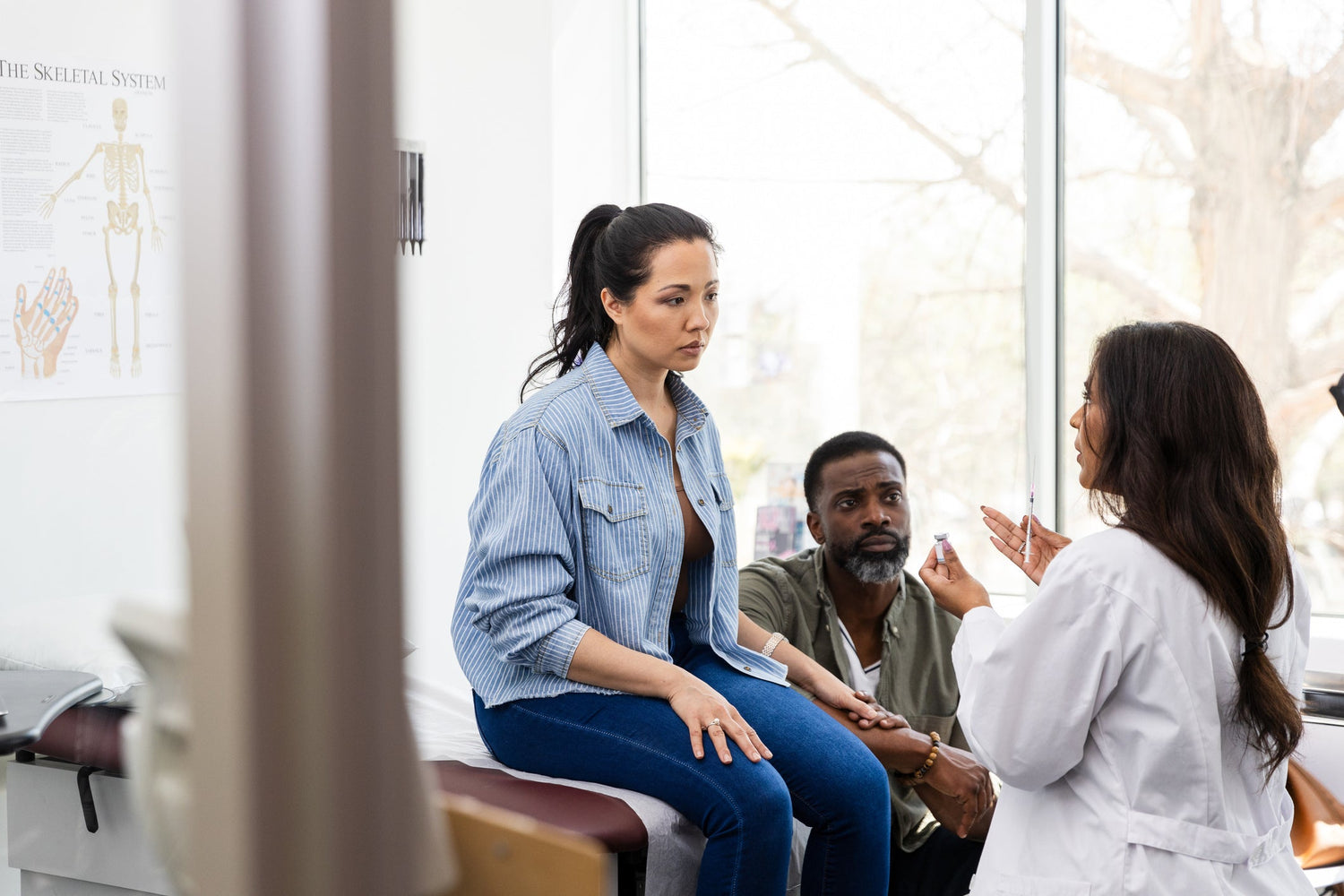The story of how and why PherDal applicators were designed to be sterile by choice, not force, was not a coincidence.
Beep.
Beep.
Beep.
That's the sound of me backing this story up to the start of women being required to be a part of medical history... that's right all the way back to the year 2001.
Let's review some facts, the first of which is that historically medical research has only been on men. Historically, medical research has only been performed by men. Historically, medical research was really men learning about men to improve men's health. The vast amount of medical research has historically involved male doctors, male patients, and men's diseases. I'm not speaking about the 1800s or even the 1900s. The National Institute of Health (NIH) did not require women to participate in clinical trials until 2001. Until 2017, the NIH did not require women and minorities to be included in Phase III Clinical Trials. Medical studies did not have to include women until 2017?! Think about that for a minute. 2017 was as of this post a whopping four years ago and is also when my husband and I were trying to get pregnant. It's also when I got pregnant with the first PherDal baby using the only sterile at-home intracervical insemination kit because nothing on the market met my needs. So we as a society need to start thinking about how little medical knowledge we have gained about female diseases and women's health if we have historically, and almost exclusively, studied men.
Back four years ago when searching for an IUI alternative or an at-home insemination kit, the first thing I looked for was sterile syringes. There were three options I found:
-
Sterile syringes designed for anything but insemination or making a woman comfortable
-
Scary-looking contraptions, some with silicone implants or metal and tubing parts that clearly were not focused on women's health and honestly scared me at the sight of them going near me
-
Unsterilized syringes, designed for at-home insemination; some even have medical-looking packaging that appeared sterile.
None of these options met my standards for what was acceptable for my body. So when I set out in 2017 to make something for myself that eventually became PherDal, the reason I made the PherDal kits sterile - was for my health. Now I am making PherDal for you because I want you to have an option to try before IUI but not just any option. At PherDal I'm creating a company whose top priority is and will always be women's health. We want to educate and empower you to ask questions and make the best decisions for you!
Bacteria: The good, the bad, the pretty, and the ugly Petri dishes
I have the privilege of over 20 years of educational opportunities that allowed me to earn an M.S. and a Ph.D. in Biology. In addition, I have more than 11 years of teaching collegiate Microbiology to primarily pre-nursing students. My post-doctoral appointment was in precision oncology. I developed prediction methods for responding to cancer treatments available today for other cancers. I was the first woman or man to be awarded a Doctorate at Northern Illinois University in Bioinformatics (Biology and Computer Science). In 2015 my dissertation covered the sequencing and analysis of DNA from several different bacteria to determine how they were related to each other and interacted with each other. Am I a science nerd? Yes. A very loud and proud science nerd.
Microbiology was one of my favorite classes to both take as a student and also to teach. When I started teaching Microbiology, on the first Monday of the semester, I gave each student a petri dish (jello-looking mixture in a plastic circle used to grow bacteria) and a Q-Tip-like swab. I offered extra credit to the person or team that would end up with the cleanest petri dish. Note: this was pre-covid so general classroom cleaning methods were not what they are today and hand sanitizer wasn't readily available.
First, I asked my students to swab what they thought was our laboratory's cleanest thing. Students would wash their hands or wipe something down and were confident almost cocky they would win the first challenge. Then, I put the Petri plates in the incubator to grow the bacteria for two days into colonies that could be seen by the naked eye. Finally, Wednesday came, and every semester the reaction was the same. I loved the look on each student's face of equal parts amazement, disgust, and intrigue at the bacteria growing on their Petri dishes from their "clean" surfaces. Meanwhile, those of us microbiology nerds have petri dish art contests which are adorable.
The point of doing this exercise was to make students aware that bacteria are everywhere, even though you can't see them. I wanted students to first understand that bacteria are almost always present. Equally important is for the students to know that all bacteria are not harmful. On the contrary, most are usually helpful to some species! In fact, you have more bacteria cells living in and on you right this minute, than you have human cells in your body. The bacteria that make up different body areas are called your microbiome. Each area of your body is like a tiny ecosystem filled with different bacteria all trying to fight for space on you. You have unique microbiomes in your gut, armpits, genitalia, and even your eyelashes (which is a reason why you shouldn't share mascara).
Changes in the species, amount, and composition of the bacteria present in your body can impact your health and fertility. This change could happen without you even knowing. For example, suppose you change your diet for 90 days. In that case, your intestinal microbiome will change and adapt to the new environment over time. Your body reacts to the environment because it wants balance which we biology nerds call homeostasis. Your body naturally tries to achieve homeostasis because it's a resting point and stable state. Bacteria compete for your microbiome landscape; if one species starts taking over, you could see signs of an infection. However, suppose just a few are slightly out of homeostasis. In that case, you might be hurting your chances of conception without ever even knowing it.
Three paths collided to explain why PherDal is sterile by choice, not force.
Just like women are finally being studied thanks to the #metoo and other social movements, so are bacteria. With recent advancements in DNA sequencing over the past decade, we have just started scraping the surface of understanding microbiomes. That means we don't fully know the extent of the microbiome's influence on medicine and health care. Right now is an exciting time for women's health to keep moving forward, and it perfectly collides with the latest microbiome research.
This collision of a focus on women's health and understanding the microbiome is helping us start to realize the influence of changes in your vaginal microbiome. For example, the NIH recently awarded over 10 Million dollars to study the impact of the microbiome and pregnancy. For myself looking back, it's pretty remarkable how my life's trajectory has mimicked these trends in technology leading me to PherDal. My past is part infertility, part microbiology research, part medical research. So it starts to make sense how and why I invented PherDal.
The infertility part
Intrauterine Insemination (IUI) was recommended as the next step for me and my husband after 14 unsuccessful months of trying to conceive and a diagnosis of unexplained infertility. I just wanted to try something else before literally taking out a loan to pay for infertility treatments with no evidence anything was wrong. Unexplained infertility is just that- they don't know why we couldn't conceive. It was just a catch-all diagnosis for "most people conceive by now." Unfortunately, nothing on the market met my needs or stood up to my scientific rigor.
The microbiology part
I started to learn why IUI was recommended from a biological standpoint. A 2017 study proved that women diagnosed with unknown infertility had a significant increase in the proportions of 3 different bacteria. Since then, more scientific research has been published about the microbiome's role in infertility. So much so that a 2020 review of clinical practice recommendations for fertility specialists called it the "new frontier" that would increase the overall knowledge of reproductive health.
The medical research part
That's why I knew the very first component of the artificial at-home insemination method I was making had to be sterile. There is no telling where items were packaged and who has handled something before it's put into what appears to be a "medically safe" looking wrapper that seems sterile. The most straightforward argument against needing a sterile option is that - sex isn't sterile; why does at-home insemination have to be? It doesn't have to be; it should be. However, sterilization of vaginal applicators is expensive and not required. It also might not be needed for most people. However, suppose you're trying to conceive and don't know why everything isn't working like you thought it would. In that case, this is one possibility, especially if you are like me and diagnosed with unexplained infertility. What if your microbiome is impacting your fertility? Do you want to risk disrupting or introducing new bacteria? We don't want you to.
Here at PherDal, we take women's health and sterile at-home insemination seriously because it's at the core of our commitment to you. I know not everyone is interested in science and all the details I could dive into. However, I believe that through knowledge comes empowerment so I want that knowledge here for you - if you want it! I also want women to advocate for their health and ask questions! Speak up and ask for explanations, it's ok if you don't understand, guess what, you aren't the only one! You deserve to understand the why and I can promise you that if you have a health care provider you trust, they want to explain things to you to help you!





